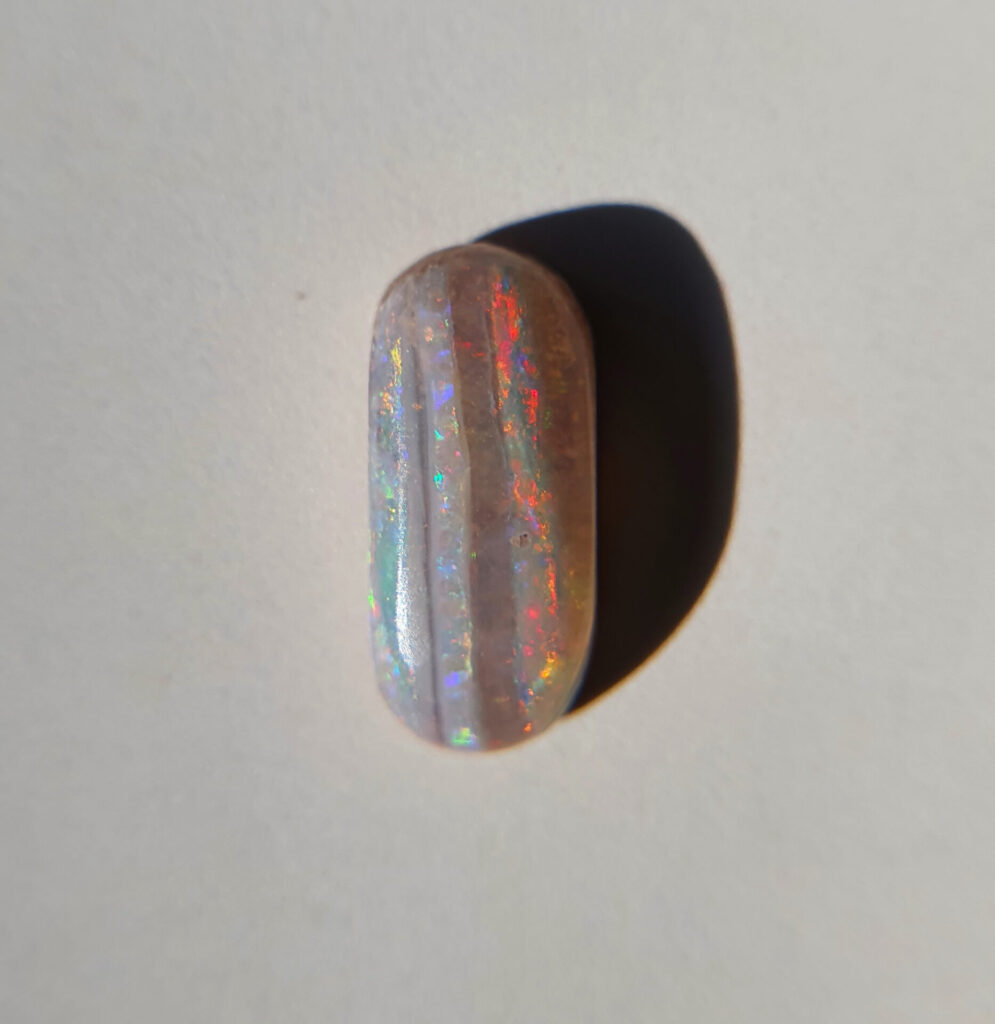
Andamooka is one of the oldest known opal fields in Australia, with opals from this region famously having been used in the Queen’s jewellery. Unlike any other Australia opal, Variations of Andamooka Opal can be treated with sugar or acid to turn it black and improve the Opal play of colour.
The word Andamooka is derived from an Aboriginal name, meaning ‘Large Waterhole’. Fun Fact: Andamooka is the only Australian town where know of the streets are named.
Andamooka Opal Fields
In 1872 a pastoral lease was taken out for Andamooka Station and 58 years later in 1930 two boundary riders; Sam Brookes and Roy Shepperd found opal at the site now known as Treloar’s Hill. The story goes that they were caught in a thunderstorm and whilst sheltering under a tree a coloured rock caught their eye. The rock was taken back and later identified as being opal. They attempted to keep the find a secret, but the word did get out triggering a rush of miners heading for Andamooka in the early 1930’s.
Unlike other Opal Fields in Australia, the Andamooka Fields contain a significant number of variations of host rock, including quartzite, shale, sandstone, and limestone. These variations in host rock make incredible difference to how the opal is formed, making Andamooka material highly unique producing the greatest number of opal variations in Australia.
This includes Matrix Opal (which is often darkened in lighter stones to enhance the colour), crystal opal, dark opal, light opal, white opal, concrete opal or ‘painted ladies’ as well as fossil opal.
Dinosaur fossils and bones have been found in Andamooka and many are now in museums. Australian dinosaurs are from 100 to 240 million years old which puts them in the Jurassic and Cretaceous periods. Many countries have dinosaur bones but only in Australia have opalised dinosaurs been found as opalised fossil.
Matrix or Boulder Opal is formed from sedimentary rock. Andamooka matrix is a unique brown sedimentary rock. Best quality matrix contains myriads of tiny deposits of gem opal and can be cut, polished then treated to produce an attractive and sought after stone that reflects the rainbow colours of crystal opal in a dense black to earthy brown base-rock. Due to the variation in host rock, Andamooka produces the only opal in Australia that can be affected by treatment due to the porous nature of the stones. Not all Andamooka material can be treated, only matrix or ‘concrete’ opal as the host rock is porous compared to other forms of Opal found in Andamooka.
It’s important to note, that treated opal is not valued as highly as naturally dark opal and that Andamooka does not naturally produce black opal. The reason being is that the treatment is somewhat of a cheat as it only occurs in nature very rarely but also treated opal only garners support from a very small audience and is much more unlikely to sell vs natural opal. Treated Opal is not fun to work with because it can’t be recut; the treatment only penetrates the opal through a very thin layer of material, recutting will result in the natural host rock’s colour resurfacing.
The equipment used to treat Matrix opal is very basic and can even be done at home (with caution)!
- Place a mixture of 1 cup of sugar in a Pyrex or other heat resistant bowl with an equivalent amount of water and heated until the sugar is dissolved.
- Set the frypan to about mid-range for the heating process. The Pyrex bowl can be placed directly onto the frypan.
- Before treating the matrix opal, it needs to be cut and shaped and sanded but not polished. The opal should be dried thoroughly by light heating to remove any moisture from the fine pores in the stone. Avoid touching the stone with your fingers as oil from your fingers can affect the treatment.
- The stone or stones are then placed in the sugar syrup solution and cooked for 8 hours plus. The time of cooking is a bit of a guess and depends on the porosity of the stones. Very porous matrix will absorb the sugar solution much more quickly than dense matrix. I do not know how to assess how long it will take but 8 hours seems a good start.
- After cooking let them cool down. It may be necessary during this stage to add some more water to the sugar solution if it becomes too thick due to evaporation due to the cooking process.
If the matrix was quite dense you should now be able to polish the stone. It is better not to use cerium oxide or tin oxide as the polishing compound can get into the pores and be seen as tiny white spots which can mar the surface. Use a leather lap with 50,000 grade diamond paste for the polishing.
Extra care needs to be taken not to apply too much pressure as this will generate a lot of heat and could crack the stone. The more porous matrix may not polish at all. If this is the case the surface can be covered with liquid glass to produce a highly polished surface. I will discuss this treatment in a different post.

